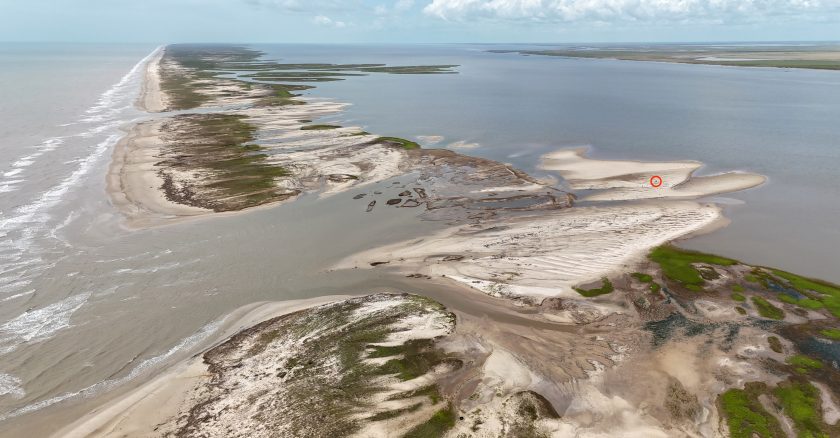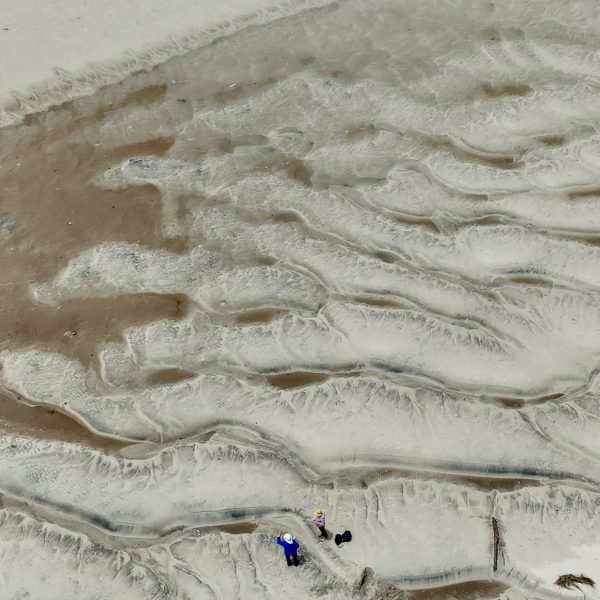Surveying Hurricane Beryl’s Impacts on Barrier Islands
December 8, 2024

A group of geoscientists from the Jackson School of Geosciences — David Mohrig, Emily Hugo, Cole Speed, and myself — spent a couple of days assessing and surveying the impacts of Hurricane Beryl on Matagorda Beach. This is a location where a barrier island has been exposed to several large storms during the last few years, including Hurricane Nicholas (2021), Tropical Storm Alberto (June 2024) and Hurricane Beryl (July 2024).

As storm surge pushes seawater up the beach and across the barrier island, sand is scoured from the beach and is redeposited on the top of the barrier and in the lagoon, in this case East Matagorda Bay. These sand-rich, lobe-shaped deposits are called washover fans; they are important components of some barrier islands.
Towards the eastern end of Matagorda Beach, a number of small washover fans started forming a few years ago that grew larger as large storms hit the Texas coast. Looking at recent satellite images acquired by Planet Labs, we realized that significant changes took place during Hurricane Beryl; so we headed out to the beach to see these changes up close.
We have found an impressive amount of erosion and deposition: at two locations, the beach and the barrier were completely breached by Hurricane Beryl, forming a 200-meter-wide deep channel at the larger site. Sand lobes up to 250 meters long were deposited on top of the barrier and in the lagoon to form washover fans. In places, these sand lobes are covered by large dunes that seem to be related to the seaward-directed flow of water after the storm surge receded. We dug small trenches to see the nature and structure of the newly deposited sediment and flew drones to map the new features using photogrammetry.
In the long term, as enhanced storm activity in the Gulf of Mexico is likely with rising sea-surface temperatures, it remains to be seen whether and how these newly formed large washover fans continue to grow and whether they develop into full-blown tidal inlets. We hope to be able to monitor their evolution during the next few years.
Zoltán Sylvester
Research Professor,
Bureau of Economic Geology
